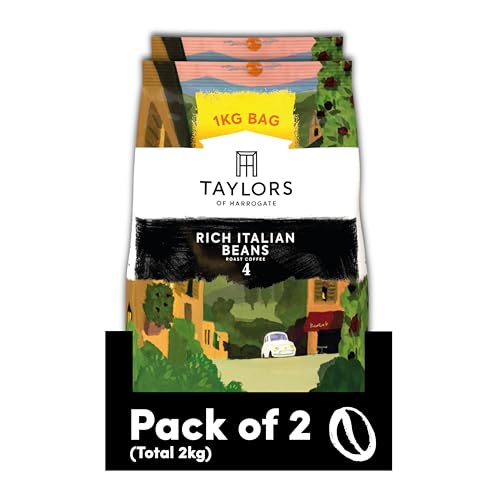The 10 Most Terrifying Things About Coffee Beans Types

Coffee Bean Types: Arabica, Robusta, Liberica, and Excelsa
If you're a coffee enthusiast you're probably aware that different varieties of beans can produce different flavors. Find out more about four of the most popular varieties: Arabica, Robusta, Liberica and Excelsa.
Excelsa beans are a kind of Liberica that is grown only in Southeast Asia. They have a tangier, more tart flavor and are often used in blends of coffee for added depth.
Arabica

Arabica is the world's most popular coffee accounting for 75% of global coffee bean production. Arabica beans are more mild and sweeter than Robusta. They also are available in a variety of flavours. The taste and aroma components of a cup of coffee can differ widely depending on the growing conditions and processing methods employed to make it.
The word "coffee" is derived from the Arabic word meaning berry. Coffee beans are actually seeds that develop inside bright red berries. It is believed that ancient Ethiopian shepherds realized that their goats became energy-rich after eating these berries, and that the cultivation of coffee quickly began to spread throughout the world.
Coffee beans can flourish at high altitudes, and thrive in cool temperatures and lots of rain. This is one of the main reasons that Arabica is considered to be the best tasting coffee.
Many specialty coffee shops and roasters insist on sourcing their arabica beans ethically, by emphasizing fair wages for farmers and sustainable cultivation practices. These companies often blend arabica beans to make unique signature coffees that are well-suited for a wide range of methods of brewing. Blending gives you control over the flavour, aroma and body of the coffee. It is typically preferred to achieve an even and consistent flavor that appeals to a wider market.
Robusta
Robusta beans are the second most popular kind of coffee bean in the world. They have a higher amount of caffeine per bean than Arabica, and are more resistant to disease and pests. They also have higher levels of chlorogenic acids which are antioxidants naturally found in. These acids can cause oxidation in the coffee's brewing process and cause undesirable flavors.
The plant is more durable than the arabica and is able to be grown in less favorable climates. It can withstand warmer temperatures and thrives in direct sun. It grows faster and produces more coffee per plant than arabica, making it a more cost-effective plant to cultivate.
While it may sound counterintuitive, Robusta and arabica beans are often blended to create coffee blends. If you've noticed the names of countries like Uganda or Kenya on a bag of coffee, it's likely that there's some Robusta in there as well.
The majority of roasters utilize a mix of arabica and coffee beans to reduce costs and preserve the quality. To preserve the flavor integrity it is recommended to select the highest quality beans from a trusted source. This can be achieved by purchasing your beans directly from a farmer.
Liberica
Liberica beans are more or less football shaped, which makes them distinct from other coffee bean varieties. They have a distinctive scent that is floral and fruity with the smoky notes. They are often added to other coffee bean types to provide them with a more rich, more robust taste.
Liberica coffee beans can be found in West Africa, Malaysia (Borneo) and Southeast Asia. They can be found at low altitudes, and they can tolerate humid, hot climates. They are also more resistant to diseases than Arabica or Robusta.
These attributes make them ideal for home cultivation. You can purchase seeds from a variety of sources. However, it's best to buy the beans from local producers to ensure the highest quality. The ideal conditions for the cultivation of Liberica coffee plants are fertile deep volcanic soils that have moderately acidic pH, and adequate annual rainfall.
Excelsa is a different type of coffee bean. It was initially classified as a separate species, but has been classified as a Liberica variant. These coffee beans are ovals that are grown on large 20-30 foot coffee plants at moderate altitudes. They have a distinct flavor that is both fruity and tart and makes them a popular choice in house blends. They have a more subtle aroma and caffeine content that is less than Arabica or Robusta however they have a distinct flavor.
Excelsa
Excelsa coffee beans aren't as well-known as Arabica and Robusta, despite being the fourth most popular. In fact they were regarded as distinct species of coffee until 2006 when they were classified as a synonym for Coffea liberica var. dewevrei. Currently, they're cultivated primarily in Southeast Asia and account for 7 percent of the world's coffee production. These coffee beans are shaped like teardrops and are dark and mysterious in taste. They're typically used in blends to provide extra body and a delicious tart, ripe fruit flavor.
Arabica beans are by far the most sought-after and are known for their sweeter taste. They thrive in warm, tropical climates as well as at higher altitudes. They also have a hint of acidity. If brewed and roasted correctly they can be flavored like nuts, chocolate or even fruit.
Robusta is a close second only to Arabica and makes up about 40 percent of the world's coffee. These beans are smaller and more round however, they contain twice as much caffeine as Arabica. highest rated coffee beans www.coffeee.uk are also bitterer than the other two types and have a woody, earthy taste.
After you've learned about the four most popular types and their characteristics, it's time to select the best brew. If you prefer a smooth and delicate flavor go for an arabica bean or a blend made up of arabica beans and robusta beans.
